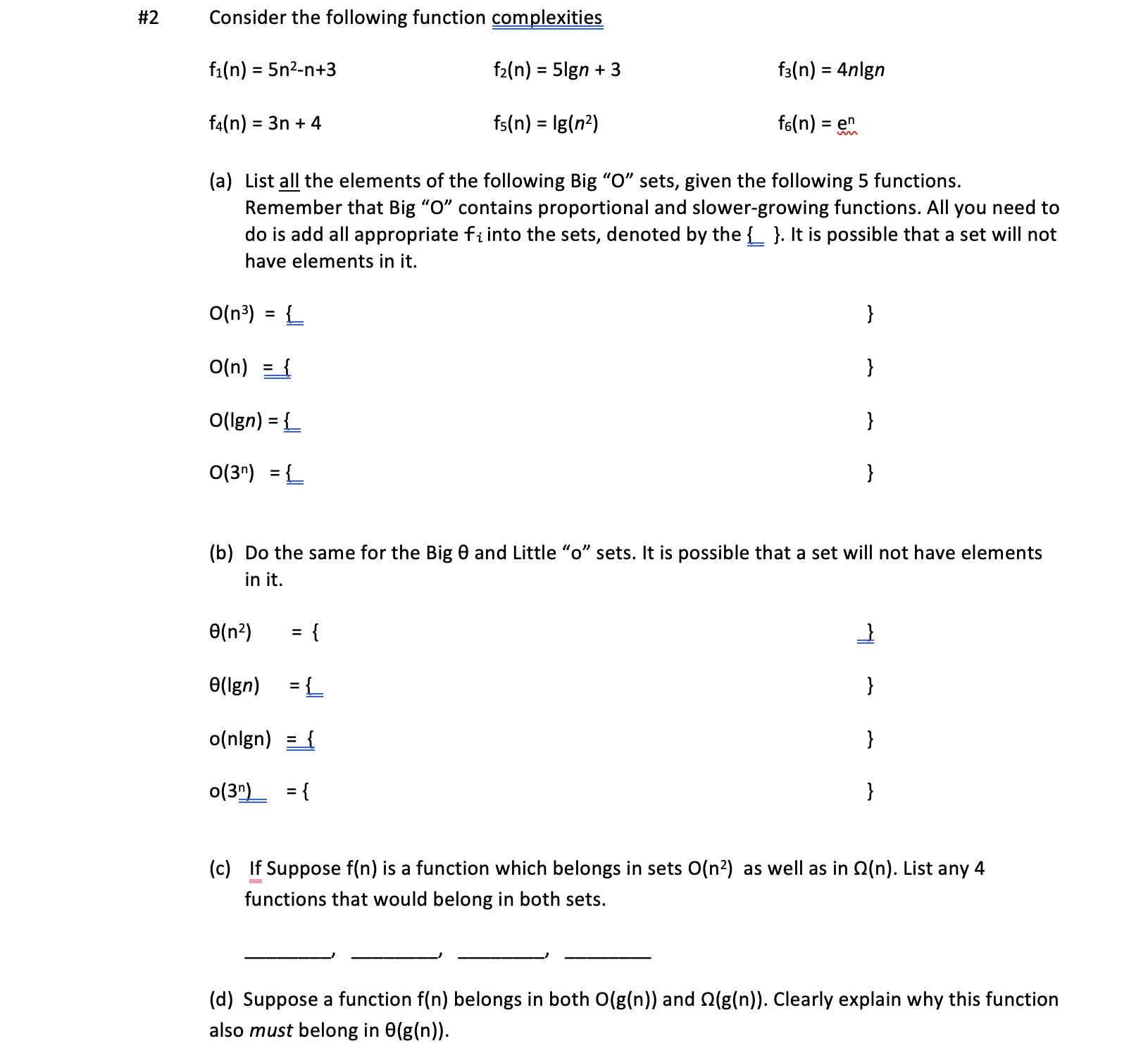Answered step by step
Verified Expert Solution
Question
1 Approved Answer
#2 Consider the following function complexities f1(n) = 5n-n+3 f(n) = 5lgn + 3 fs(n) =lg(n) f3(n) = 4nlgn fo(n) = en (a) List

#2 Consider the following function complexities f1(n) = 5n-n+3 f(n) = 5lgn + 3 fs(n) =lg(n) f3(n) = 4nlgn fo(n) = en (a) List all the elements of the following Big "0" sets, given the following 5 functions. Remember that Big "O" contains proportional and slower-growing functions. All you need to do is add all appropriate fi into the sets, denoted by the { }. It is possible that a set will not have elements in it. f4(n) = 3n+ 4 O(n) = { O(n) = { O(Ign) = { 0(3n) = { 0(n) 0(Ign) o(nlgn) { o(3) = { = { } = { } (b) Do the same for the Big 0 and Little "o" sets. It is possible that a set will not have elements in it. } } } } } } (c) If Suppose f(n) is a function which belongs in sets O(n) as well as in (n). List any 4 functions that would belong in both sets. (d) Suppose a function f(n) belongs in both O(g(n)) and (g(n)). Clearly explain why this function also must belong in 0(g(n)).
Step by Step Solution
★★★★★
3.55 Rating (155 Votes )
There are 3 Steps involved in it
Step: 1
Step 1 a List all the elements of the following Big O sets On35nn3 5lgn 3 4n lg n 3n 4 lg n e On 5nn...
Get Instant Access to Expert-Tailored Solutions
See step-by-step solutions with expert insights and AI powered tools for academic success
Step: 2

Step: 3

Ace Your Homework with AI
Get the answers you need in no time with our AI-driven, step-by-step assistance
Get Started


